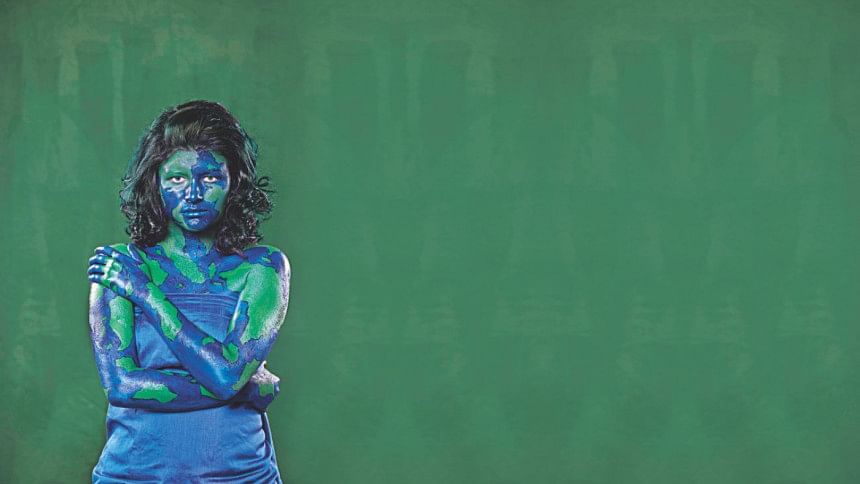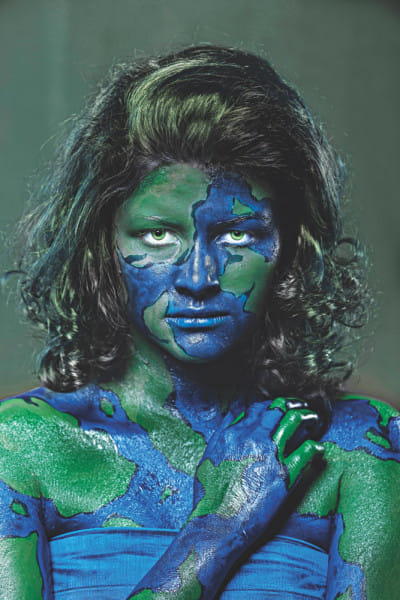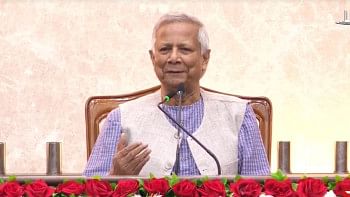A Pale Blue Dot

He imagined the creation, with chaos, and the gods bringing order to what they had shaped.
But one of the first disciplines, he maintains, is breath; breath that creates an airy vacuum between things, providing each with its own individual orbit, or what we call void; space.
And perhaps now, more than ever, Gaea — is out of breath!
Gaea, the primordial Greek goddess, has long been a personification of the Earth; the ancestral root of all life.
Uranus, the Greek sky-god, was conceived by Gaea alone, and with whom she bore the Titans.
The primordial goddess has been characterised as a creation of void, the philosophical concept of nothingness manifested.
For many, the manifestation of nothingness is closely related to the contemplation of emptiness, and human attempts to identify and personify it.
In that sense, it can be said that the knowledge or experience of the void is in reality "the invisible," given its inherent ineffability, a popular concept even in the mystical traditions of our culture.
The image of Gaea is often in the leaves that wrap around her, sometimes she is a tree, or a woman with a swollen belly — the Mother.
While her look has always been one of deeply immersed in love, happiness, and positivity of life, none can doubt that Gaea, the Mother Earth, is now anguished-- in peril!
Creation of a new image of women as Mother Earth, is where we leave off after the kisses of a midnight story-telling session, but truly, one cannot cease to wonder why myriad cultures across the globe perceived Earth as a woman, a mother. While we do not doubt the divinity of this belief; we do question its rationality.
True, it may seem like a flight of fancy, and perhaps it is, but how about a woman, Gaea, Terra Mater, whatever name you chose to call her, as the seed of life?
In theory, living organisms interact with their inorganic surroundings, it's a synergy that helps maintain the complex system that makes Earth habitable.
The 'Gaea Hypothesis,' as it is known, is full of jargons, but the underlying principle is simple enough — as organisms evolve, they affect their surroundings, from global temperature, to the level of oxygen in the air. This, in turn, affects the myriad organisms that thrive in the ecosystem.
Perhaps what it tries to state is that the animate and the inanimate are so closely linked that when one variable changes, the other invariable undergoes some changes.
For eons, this has been the case, but with rampant intrusion of humans into the natural habitat surrounding them, it has reached a point where the perfect balance now ceases to exist.

Every soul has a limit to absorb a shock; and Gaea is now overburdened with the greed and the profit-mongering ventures of humans, naysayers who vouch for the non-existence of climate change, where the Earth is still in harmony with everything around.
While people are trying to build walls around to safeguard their interests, many fail to comprehend that we no longer live in pockets, or closed ecosystems.
No matter how remote, as travelling has become easier, pandemics have the potential of spreading across the globe within hours.
The hypothesis was initially criticised for being dogmatic and against the principles of natural selection, and as years have passed, the Gaea hypothesis continues to attract criticism.
But with all certainty, human greed has reached a point when our very survival is at stake. As far as science is concerned, the capacity of our minds, and even our ethical stand, the pale blue dot is the grandest design. As insignificant as it may seem in terms of cosmology, we are yet to find our match, yet the universe has been there since the beginning of time.
No matter how far we travel deep into what is considered as the final frontier, the image of Gaea wrapped in leaves and foliage and everything that speaks positive of life, is a symbol of our existence.
Maybe Gaea is a myth. It is a myth.
But in essence, it's a myth on which all our survival stands upon. The pale blue dot may not be the centre of the universe, but it is the centre of all things beautiful.
Photo: Sazzad Ibne Sayed
Model: Aporajita Mustafa
Body paint: Syeda Afsana Keya
Styling: Sonia Yeasmin Isha





Comments